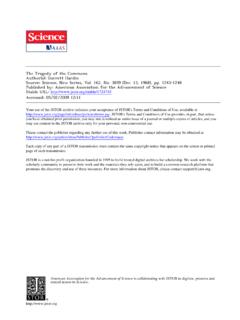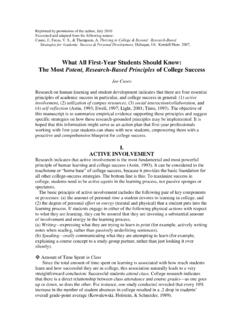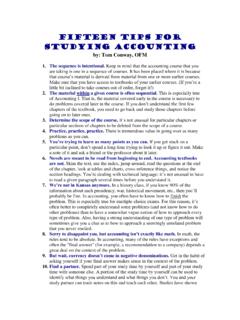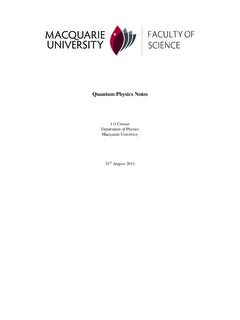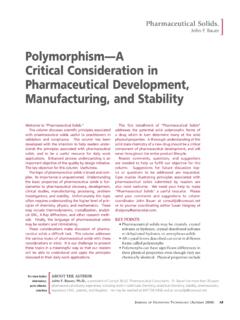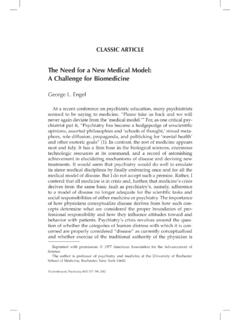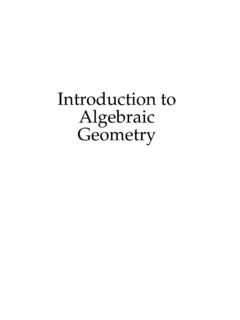Transcription of TheDoubleSlitExperiment andQuantumMechanics
1 The Double Slit Experiment and Quantum Mechanics . Richard Rolleigh 2010. Abstract The double slit experiment performed with particles and parti- cle detectors is used to clearly demonstrate the nonclassical behavior of microscopic particles including the delayed choice experiment and causality issues. The realist and orthodox interpretations are pre- sented with an explanation of why most physicists prefer the latter. The nature of a measurement is described precisely. The double slit experiment is extended to provide an experimental basis for the ax- ioms necessary to develop quantum mechanics. 1 Introduction. When we first studied quantum mechanics as college students in the 1960's, my colleagues and I were astounded by strange and weird con- cepts like wave particle duality, the uncertainty principle, nonexistence of trajectories, and collapse of the wave function.
2 Today, sixty years later, those same concepts have become part of our culture through television shows like Star Trek, Sliders, Quantum Leap, and the NOVA. series. However, I suspect that today's students find it almost as diffi- cult as we did to accept a physical theory that contradicts so strongly the Newtonian mechanics that we learned intuitively as children. We know that moving objects have trajectories because we have played baseball and soccer. We know that inanimate objects like base- balls have a well defined nature and that their behavior is totally . copywright August 2010. 1. determined by initial conditions and the forces acting on them. All inanimate objects familiar to us obey Newton's laws.
3 Yet the quan- tum physicists tell us that all these familiar things are made up of microscopic particles that do not obey Newton's laws at all. What rational person would believe this rubbish? In support of their ridicu- lous claims, the quantum physicists give us convoluted explanations of esoteric experiments and even more convoluted explanations of even more esoteric mathematics. What is needed is a simple experiment that we can all understand and that unequivocally demonstrates the more disturbing properties of microscopic particles. It would also be nice if the experiment had actually been done and the results corroborated the strange predic- tions of quantum mechanics.
4 Richard Feynman described just such an experiment in 1963: the double slit interference experiment that you studied in introductory , 2, 3. The double slit experiment (DSE) was first reported to the Royal Society of London by Thomas Young in 1803. Young did the ex- periment with light waves (photons) and measured the interference bands by observing the brightness of the light. Feynman proposed us- ing modern technology to either do the experiment with electrons or do it with photons and detect individual photons. Clinton Davisson and Lester Germer had demonstrated electron diffraction in 1927, but this is one of those esoteric experiments referred to previously. The Feynman double slit experiment with individual electrons or photons is easier to understand and confronts us with inescapable evidence of the weirdness of microscopic particles.
5 The experiment was not done in the form that Feynman described until The experiment has since been repeated in a multitude of forms that include all the aspects described The first six sections of this article draw heavily on Reference 1. Richard Feynman, The Feynman Lectures on physics , (Addison wesley 1963), Volume III, Chapter I. 2. Richard Feynman, The Character of Physical Law, (MIT 1965), Chapter 6. 3. This note is intended for students of introductory Quantum Mechanics. However, if you have had no physics , you should find much of it interesting and comprehensible - you can just ignore the equations. 4. Am J of physics , 41, p 639 - 644, 1972. 5. The latest was in 2008.
6 For exact references, see indepth/9745 and test experiments#Loopholes. 6. Reference 2 uses everyday language instead of technical terms, and may be more accessible if you find my article too technical. 2. Sections 7 and 8 discuss causality issues, Section 9 explains what is meant by measurement in quantum mechanics, and Section 10. demonstrates how the axioms of Quantum mechanics follow from the results of the double slit experiment. 2 Intrinsic properties of particles that motivate the experiment. Electrons and photons (and all other microscopic particles) exhibit two important properties that are crucial to the importance of this exper- iment. The first is that they all obey interference phenomena just like waves.
7 You have probably observed interference of light waves passing through a double slit apparatus. It is firmly established ex- perimentally that electrons behave the same way. In fact, double slit interference has been demonstrated with electrons,7 neutrons,8 atoms, 9 and The second important property that electrons, photons, and all other microscopic particles share is that they are always detected as individual particles, not as waves. When you did the Milikan oil drop experiment, you observed the motion of oil drops (or perhaps spheres made of teflon, plastic, or glass) containing a small discrete number of electrons. If any of those drops behaved as if it contained a fractional number of electrons, you were probably suffering from eyestrain.
8 It is easy to believe that particles like electrons, protons, and neutrons are always detected as a whole particle and never as a piece of a particle. However, you may have imagined that you see light much as you hear sound, and since sound is clearly a wave, light must be too. You would be wrong: you see light very differently from how you hear sound. Your retina is covered with many tiny rods and cones, and when you see anything, individual photons are absorbed by these rods and cones. Each photon causes a discrete electrochemical excitation that is transmitted along the optical nerve. This is a very different process from that of your eardrum which moves as a unit due to air pressure variations spread over the entire eardrum.
9 7. American Journal of physics , Volume 42, pages 4-11, 1974. 8. Reviews of modern physics , Volume 60, pages 1067 -, 1988. 9. Physical Review Letters, volume 66, page 2689 - , 1991. 10. Letters to Nature, Wave Particle Duality of C60 molecules, Markus Arndt, 1999. 3. Let me say this again to emphasize it. Your eyeball is covered with a large number of photon detectors. When you see something, each detector counts the number of photons it received and transmits that number to the brain. Some of the detectors (the cones) can detect the energy of the photons, and they transmit that value to the brain also (thus providing color vision). Your eyeball works much like the detector portion of a digital camera.
10 You have never observed a light wave in your life, but you have added up the numbers of photons striking different places on your retina to create a diffraction pattern. To me, the most convincing evidence that all particles, including photons, are always detected as individual and whole particles was observing the output of a particle detector on an oscilloscope. The output is a series of pulses. Each pulse represents the passage of one particle (a photon, an electron, or whatever) through the detector. You get the same effect with an old fashioned geiger counter: each click represents the passage of a particle through the detector. If you have never had the opportunity to observe this, you should at least read Wikipedia's article on particle detectors.
